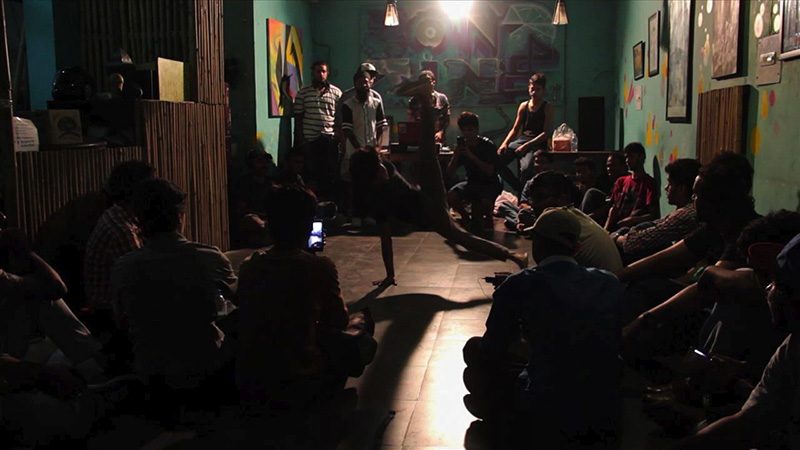Samreen Farooqui and Shabani Hassanwalia




Grant Period: Over one year and six months
Samreen Farooqui and Shabani Hassanwalia founded Hit and Run Films, an independent video production unit, in 2005, which engages with changing socio-political-personal realities through documentaries, video art and intervention films. Their first documentary, Out of Thin Air, on the local cinema industry of Ladakh was supported by the IFA. It was an official selection at the International Film Festival of Rotterdam and was the opening film at Film South Asia, 2009, besides playing at numerous other festivals. Online and Available, released in 2012, told a story of an India-in-transition through its online identity formation. They’ve worked with and been supported by various organisations including The Films Division, Channel 4, PSBT, UNESCO and the Ford Foundation. Bhaijaan, their next film under-production is a documentary that tries to understand Indian masculinity through the icon of Salman Khan. Their current project supported under IFA’s research programme is a documentary on the street dancers of Khirki village, Delhi.
The same urbanisation that enables liberal economic policies of globalisation to function, also renders the disenfranchised and displaced mass of the process powerless. Protests are often brutally crushed and the traditional communities displaced in the process are made to believe in the greater goal of a specific model of development. Once rendered powerless it is almost impossible for them to unite and put up a political and economic resistance. This has been the global pattern. However, almost always the communities have found strategies to negotiate with this violence. They have sustained some of their old practices and have taken advantage of the new facilities to reclaim and reassert their identities through myriad negotiations. Mikhail Bakhtin talks about the “Carnivalesque” where the normal boundaries imposed by the society are transcended and it becomes a space for the disenfranchised to voice their dissent. In a carnival everyone is a participant and the hierarchies vanish. It is at the same time bodily and bawdily. Since it doesn’t have to carry the burden of being ‘civilised’ it can easily question and destabilize the very processes of sanitised city that has rendered them powerless. Samreen and Shabani’s research addresses such a phenomenon in Khirki village of Delhi. Khirki is an urban village surrounding the Khirki mosque built in the 14th century. As the process of urbanisation took its toll on Delhi, the agrarian village transmuted into a densely populated residential area cosmopolitan in nature but deeply scarred by community divides. It is now a home for the traditional Jats, migrant labourers, students, artists and office goers who came from Punjab, Haryana, the North-Eastern states, Kerala and various African Countries. The area has no proper drainage and is characterised by acute water shortage and mushrooming unauthorised buildings. Just across the village is a series of spaces that signify the promise of globalisation, the snazzy Select City Mall, the super-speciality hospitals, the international schools, luxury hotels and cineplexes. This provides the backdrop for Samreen and Shabani’s work that tries to understand how the manicured lawn of the mall is becoming a space of negotiation for the disenfranchised living across the road.
In the Khirki village there are groups of hip-hop dancers primarily consisting of young boys of various ages. They use the lawn of the mall for their show and practice pad. They are armed with smart phones and have their bodies as their only prop. All this happens within a guerrilla window of 20 minutes when the change of guard happens at the mall. These boys are part of a B-boying and breaking group called Tiny Drop. B-boying and breaking started in New York in the 1970s by African American and Latin American youth. It has spread to various countries and has gained its popularity among the disenfranchised youth in the urban centres. It found its root in India mainly in Dharavi, Mumbai and Khirki, Delhi. Samreen and Shabani have been working with these boys for some time now and want to understand the art form from their perspective. They consider this as a contemporary artistic tradition in the making that has various social and political ramifications. The grant is to enable them to study the economic and social formations of the practice. They want to find out what made this particular street dance culture, which has no link to India, attract the disenfranchised urban youth in Delhi. One of the significant questions they will address through this study is that of masculinity in this practice. They wish to look into the identity formation of these boys through their practice as well as the reassertion of the village community in the urban scene. The smart phones or internet technology that liberates them from the oppression of the liberal economy are also products and carriers of the same socio-economic hegemony. They wish to see how these boys respond to and negotiate these complex questions in their practice. The outcome of the research will be a film.
This grant was made possible with support from Titan Company Limited.
